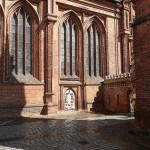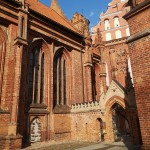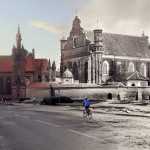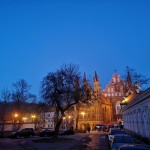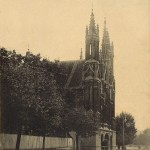Exposition of bricks at St. Anne’s Church
Brick is one of the oldest and one of the most sustainable building materials. Manufacture of burnt bricks spread in the Roman Empire under the reign of Emperor Augustus from 27 BC to 14 AD. It was only in the 12th century when the large-scale manufacture of burnt bricks began in the Northern Europe, Germany and Denmark, yet in Lithuania it began in the second half of the 13th century.
Bricks, which became the main masonry construction material in the Middle Ages, prevailed in Lithuania until the 20th century when they were replaced by the sand-lime bricks, metal and reinforced concrete structures. Nowadays, the use of bricks has become reduced due to the relatively high price but their aesthetics and sustainability are the key factors that keep them popular.
Gothic architecture, which originated in Europe in the 12th century, flourished in Lithuania from the late 14th century to the 16th century. The Church of Saint Anne is a unique piece of the Late Gothic architecture. Bricks of more than 34 distinct profiles were used in the process of construction thereof in 1495-1501. On 22 May 1501, the Saint Anne’s Church was granted the privilege of indulgence by Pope Alexander.
In 1903 – 1908, under the supervision of the Polish architects Józef Pius Dziekoński and Sławomir Odrzywolski, the church underwent strengthening of the walls and foundations; arches were rebuilt and the roof was renovated. Quite a lot of high-quality profiled bricks were manufactured at that time, which were then used for renovation – replacement of the broken ones. In 2009, following the design of architect Antanas Gvildys, the main façade and the roof structures were renovated, side towers were rebuilt and the tiling was renewed.
Exposition of bricks was created by Vilnius Old Town Renewal Agency at the beginning of 2021. Here, some authentic bricks of the St. Annes’s church are displayed. Before the bricks were put in the kiln, a dog and a baby bear accidentally left their footprints on the bricks during the drying process.


